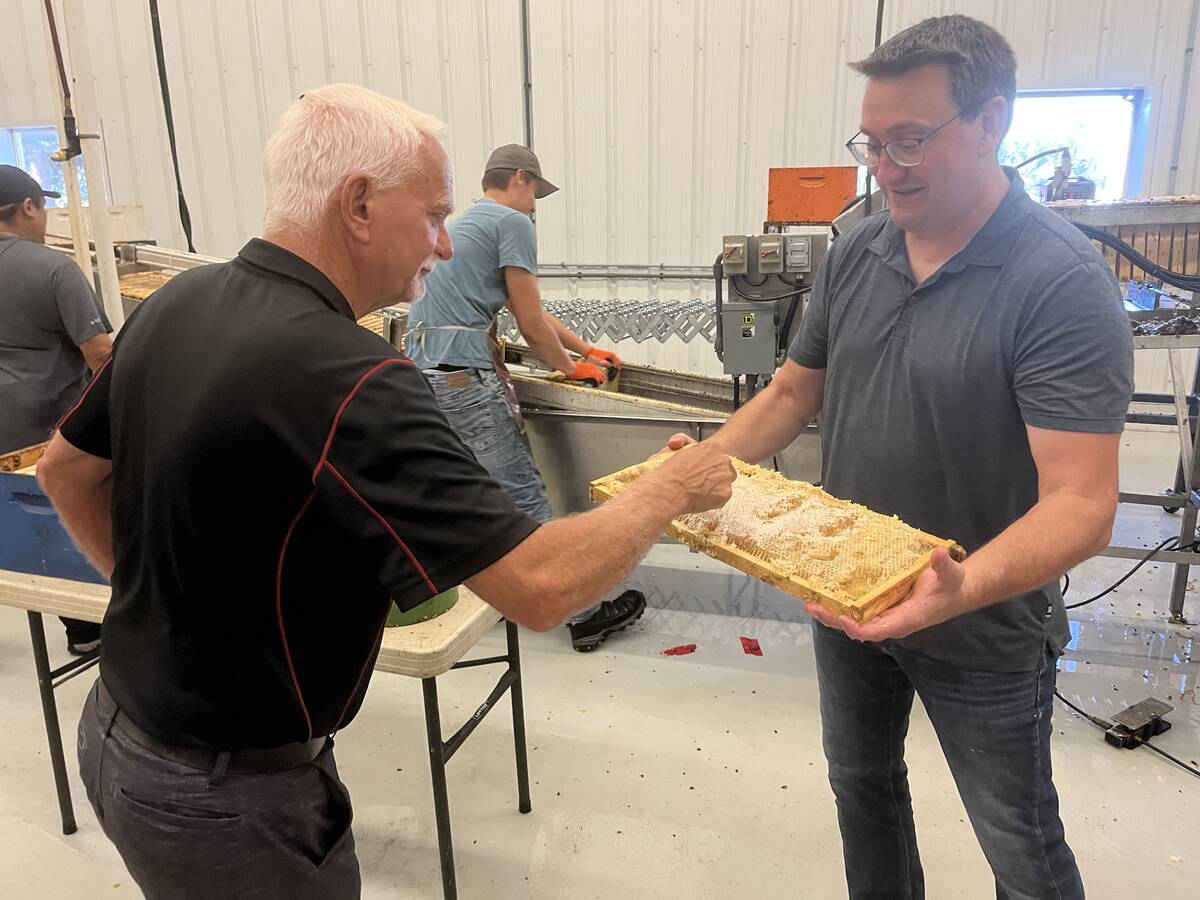TERRACE, B.C. – From Iceland to a sometimes-icy land, a herd of purebred horses find British Columbia similar to their native home.
Northwestern B.C. isn’t well known for its agriculture, despite being home to a large commercial cattle population and many specialty equine and organic farms.
Ellen Hansen and Patrick Stewart carved their 30 acre farm from the trees and bush that cover the hills between several mountain ranges that meet near Terrace, B.C.
Hansen enjoyed horses and riding in her native Germany, but knew that becoming a professional breeder there would require a lot of money and produce relatively poor returns.
Read Also

Alberta honey business ‘thrives’ despite bumpy beginnings
Thrive Honey showcases its honey production in market where Alberta produces 40 per cent of all honey produced in the country
“In Canada we have the natural beauty of the landscape and possibility to raise horses as a business,” she said.
After homesteading 11 years ago, Hansen began her goal of owning a riding stable and breeding her favourite horse, the Icelandic.
The feisty, compact Icelandic with its double hair coat and tough feet found the sometimes wet, snowy and cold conditions near Terrace ideal.
“You can see how these horses thrive in Canadian conditions,” she said.
Hansen and Stewart breed their horses for pleasure riding and endurance competitions.
Stewart said the animals are good for children because of their size and their five gaits, or manner of moving.
“They can provide such variety to a rider that you never get bored,” said Stewart.
Hansen and Stewart chose their horses based on their sturdiness of build and their gait.
“We want to first see a square gait,” said Hansen. “It needs to be natural without a bunch of training. Then a canter and a trot. Flying pace is not a big issue for our horses.”
Hansen looks after administration, horse training and sales, including an internet tack business that imports Icelandic products.
Stewart handles day-to-day operations of the farm and travels to Iceland for clinics and evaluations as well as to source breeding stock.
The couple believes in leaving the horses to grow with as little interference as possible in their first three years.
“They need to get used to seeing the vet, having their feet tended to and getting used to seeing traffic, trailers and the basics of day-to-day life on the farm. We don’t start any training until they are four. Even then we don’t push them. They just get used to wearing the saddle and be taught to be trustworthy,” she said.
The couple say even before their three children came along, they wanted horses that were safe for families. Stewart said now that they have the kids, those traits have been reinforced in their animals.
In winter, the younger horses are turned loose for most of the season on 40 acres of rented, remote mountain pasture.
At age six the couple begin gait training and at seven the horses are considered to have reached “a youthful maturity. They are a little slower than other breeds and we take more time than most (Icelandic) breeders. But we have a niche market for an expensive, exotic riding horse and we want to have a strong reputation for our horses,” said Hansen.
In recent years the couple has found their location and the rising Canadian dollar have created challenges in marketing their stock. The American exchange rate has taken 30 percent from the price of horses that can bring $10,000 or more.
“Eighty percent of our business is in the (United States) and down there several larger breeders have suddenly gotten out of the business. It flooded the market, so we do see prices being pushed down the past two seasons,” she said.
“We have to add as much as $1,000 to the price of a horse to reach some southern American markets now. When you are 700 kilometres north of Vancouver, even fuel prices cost you,” she said.
The couple says they intend to keep their breeding herd less than 30 horses, making it possible to personally train and market older horses.
Stewart said they also want to maintain a farming lifestyle that doesn’t require them to continually expand or hire a lot of staff.
“We’ve got endless trails in old growth forest surrounding the farm. We wouldn’t want to have to forgo riding ourselves or enjoying our farm for the sake of raising a few more horses,” he said.
Hansen plans to return to competitive endurance riding when their children are older.
“Right now it is seven hours in the truck to the next nearest breeder. With the kids, we don’t go to as many events as we used to,” she said.
“But it’s a farm and I’m sure that will change as they get older. Just like everything else on a farm,” she said.
















